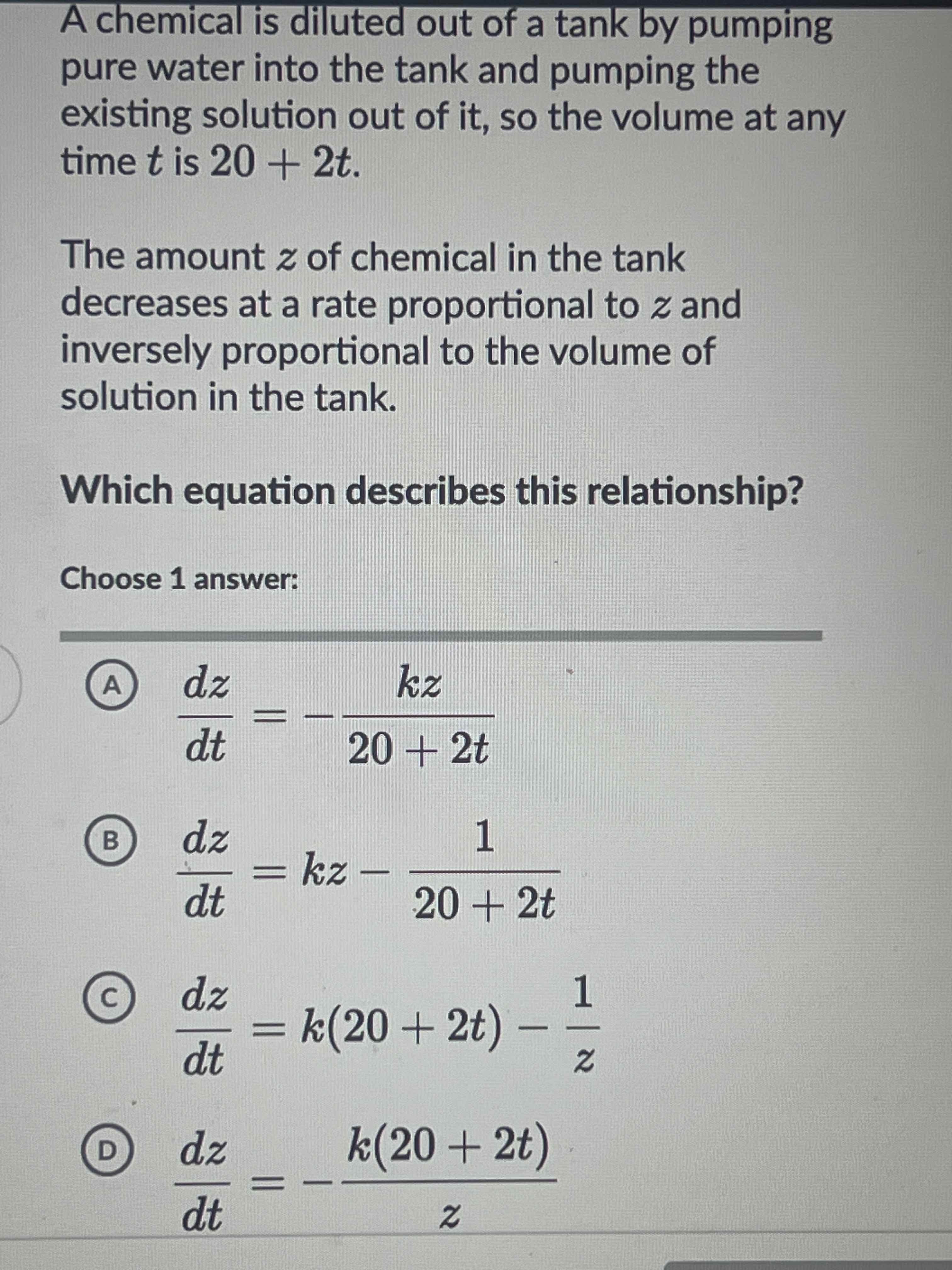AI tutor
Welcome to Bytelearn!
Let’s check out your problem:

A chemical is diluted out of a tank by pumping pure water into the tank and pumping the existing solution out of it, so the volume at any time is . The amount of chemical in the tank decreases at a rate proportional to and inversely proportional to the volume of solution in the tank. Which equation describes this relationship? Choose answer:(A) (B) (C) (D)
Full solution
Q. A chemical is diluted out of a tank by pumping pure water into the tank and pumping the existing solution out of it, so the volume at any time is . The amount of chemical in the tank decreases at a rate proportional to and inversely proportional to the volume of solution in the tank. Which equation describes this relationship? Choose answer:(A) (B) (C) (D)
- Identify relationship: Identify the relationship between the rate of change of the chemical amount and the volume of the solution. The rate of change of the chemical amount, , is proportional to the amount of chemical and inversely proportional to the volume of the solution .
- Formulate equation: Formulate the equation based on the relationship. Since is proportional to and inversely proportional to , the equation should be , where is a constant of proportionality.
- Match with options: Match the formulated equation with the given options. The correct equation corresponds to option (A).
More problems from Transformations of quadratic functions
QuestionGet tutor help
QuestionGet tutor help
QuestionGet tutor help
QuestionGet tutor help
QuestionGet tutor help
QuestionGet tutor help
QuestionGet tutor help
QuestionGet tutor help
